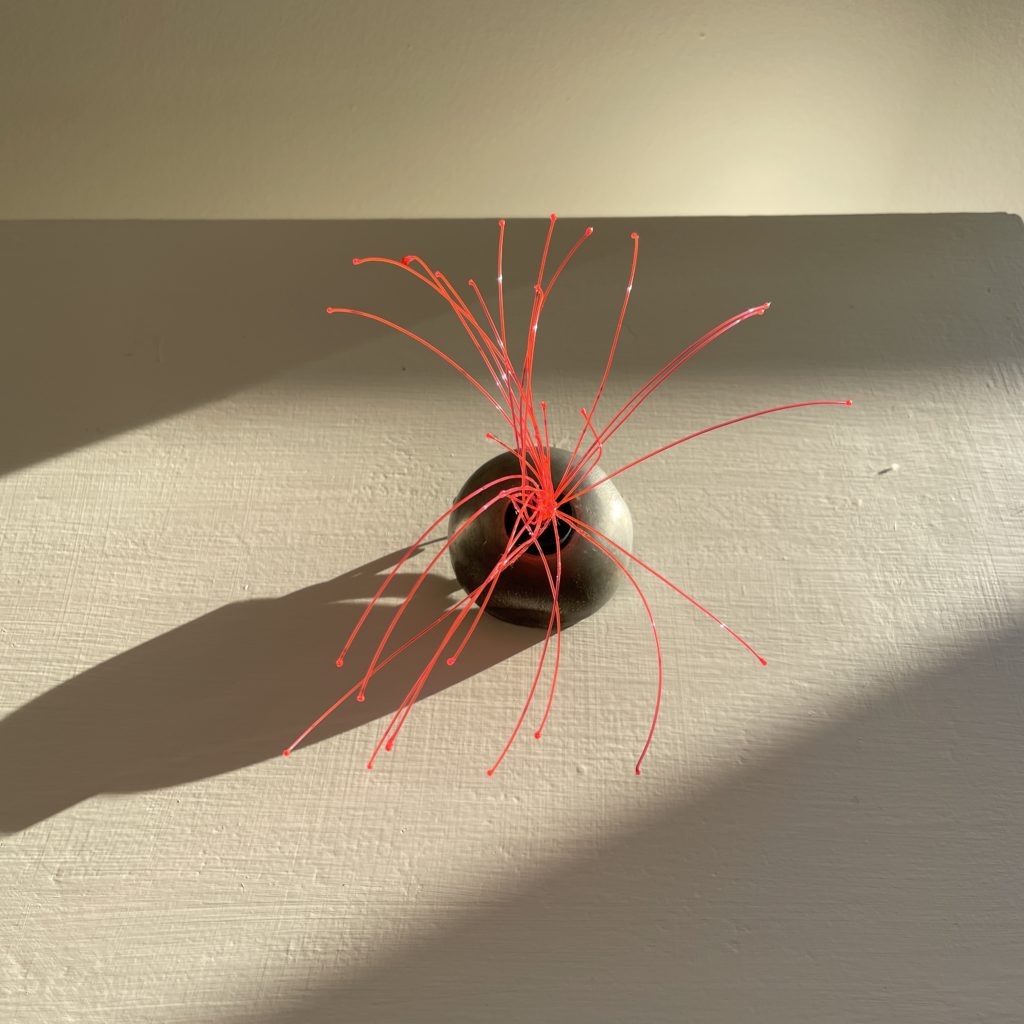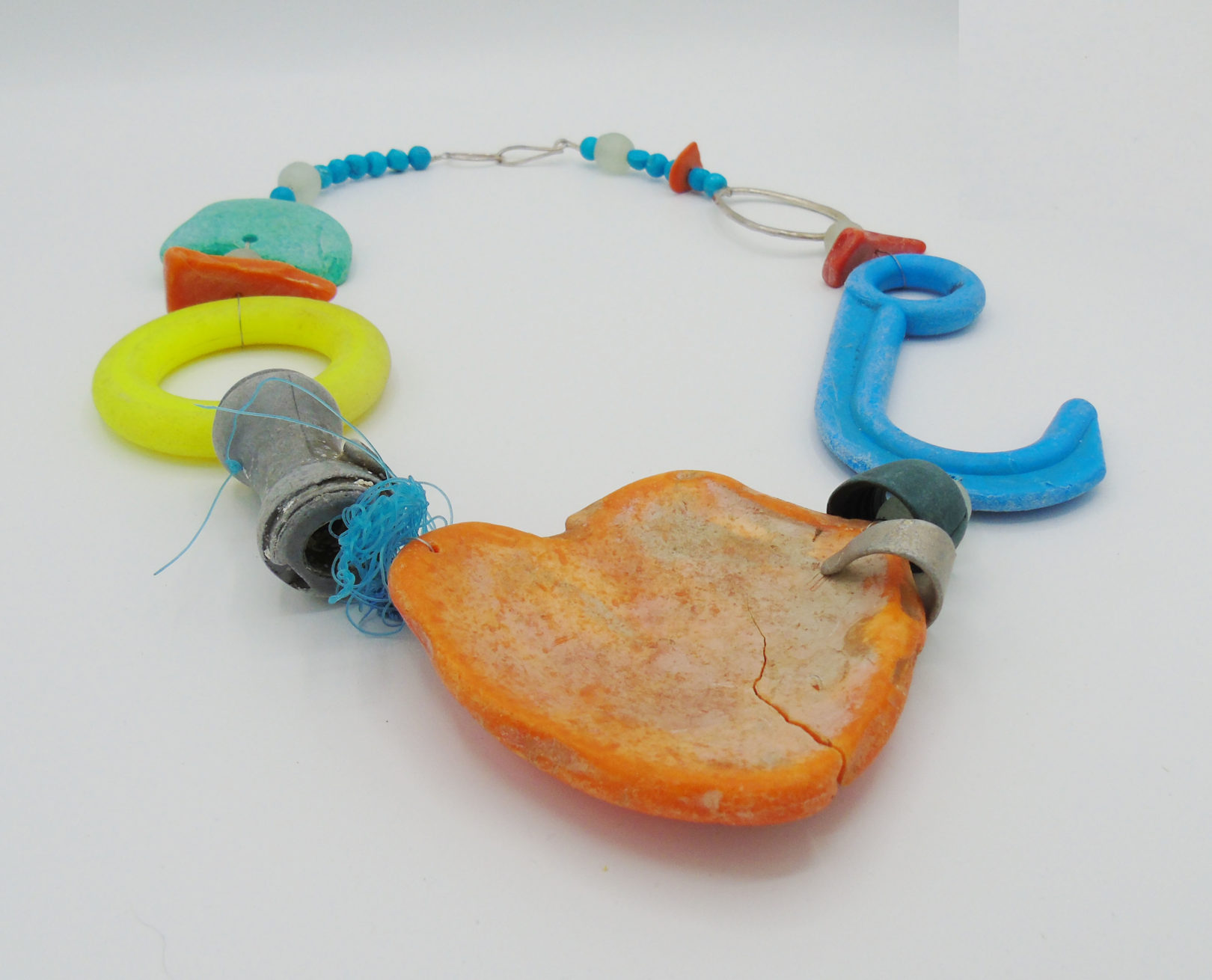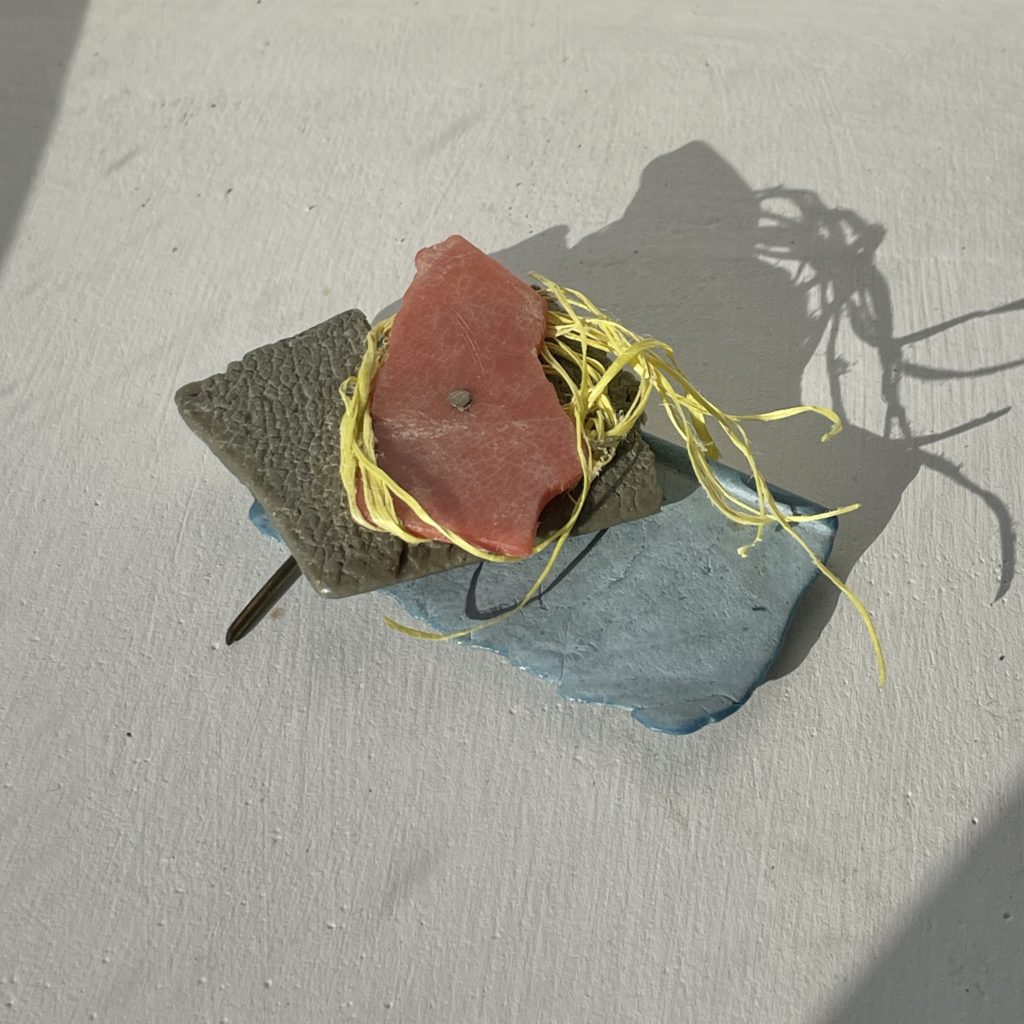by Alix Spooren
In a world overrun by stuff, makers are choosing a different path. Jewellers around the world are collecting plastic waste and transforming it into unique, meaningful creations. What was once discarded as worthless is being reimagined as wearable art. These jewels aren’t just objects—they carry stories within them: of pollution, consumption, but also of imagination and hope.
And that’s no luxury. Every year, we produce more than 460 million tonnes of plastic globally, of which only around 9% is effectively recycled. The rest piles up in landfills, is burned in kilns, or ends up — sometimes after long detours — in nature, rivers and oceans. In the UK alone, the average person consumes more than 30kg of short-lived plastic each year, resulting in more than 250,000 tonnes of mismanaged plastic waste in 2023.
There is no such thing as ‘away’
Yet, every time we “throw something away,” we often think that it’s really gone. But there’s no such thing as ‘away.’ Everything we throw away simply goes somewhere else, to landfills on the edge of cities, to other countries, or simply to places where we don’t need to see it. That ‘away’ we talk about is still our world.
In this overcrowded world, a fundamental question arises: How can we make things when there are so many things? Stores are full of products that no one really needs. The overproduction, the speed at which we buy and throw away — it all contributes to a system that puts our planet under pressure.
Recycled jewellery is meaningful
And that’s exactly why these recycled jewellery pieces are so meaningful. They show that creating doesn’t necessarily mean producing more. By working with what already exists — plastic bags, packaging, discarded materials — these makers choose a form of making that doesn’t contribute to more unnecessary stuff, but rather offers an alternative to the throwaway mentality.


Not more, but different
These jewellery pieces are more than aesthetic objects. They challenge us to look differently at what we see as waste. They are silent statements, reminders of the impact of our consumer behavior and of the creative power of reuse. Instead of contributing to the mass production of even more ‘stuff’, these makers choose a way of creating that shows awareness, urgency and hope.
Perhaps that is the future of making: not more, but different. Not throwing away, but rethinking. Not ending up in the trash, but starting at what we normally consider the end point.


